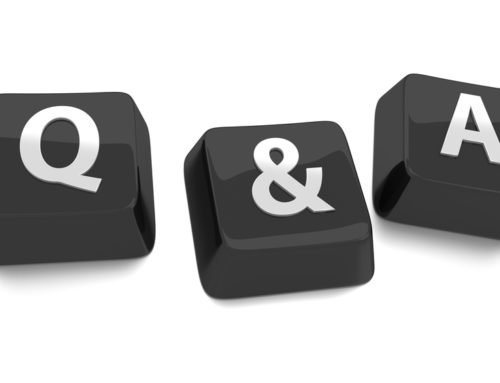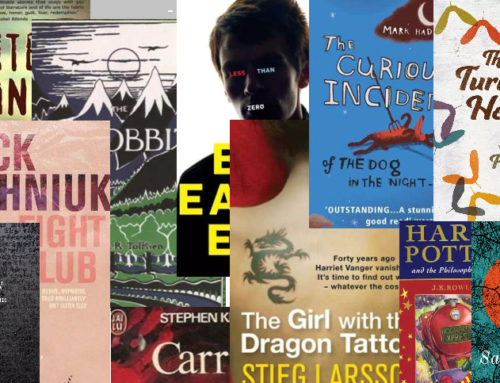[by Sean Fletcher]
It happens more often than you think. A budding (or seasoned) writer approaches me for an edit on what they believe to be a work of middle grade, only for me to tell them that their 100,000-word fantasy about a 17-year-old discovering their identity among a totalitarian regime would fit better as a young adult novel than anything geared toward children. While this sounds outlandish, it’s not a difficult mistake to make. After all, what does differentiate a work of middle grade from something for young adults?
Below are some of the most common ways to help define whether your book is young adult (YA) or middle grade (MG). Hopefully this will help you at any stage of the writing process to avoid agent rejection, bad reviews, or ease the difficulty of marketing your work.
But wait! I can already hear you saying as you read over these points, so and so author with Fill in the Blank Bestselling Title broke some of these rules and it worked for them!
That is certainly true, there are absolutely exceptions to the norm. But I’d argue that those who broke the mold either got lucky, were already established, or knew the rules beforehand, and therefore knew exactly how and where to break them.
Age Range
Let’s clear something up first: Though middle grade (MG) and young adult (YA) are used as genres, they’re technically age ranges. That said, for the sake of this article and the industry standard, we’re going to treat them both as genres.
- Middle grade, broadly, contains protagonists and most primary characters around ages 9-12
- YA (again, generally) contains protagonists and most primary characters around ages 13-18, and is often read by adults (including yours truly)
What’s important to remember is that younger readers like to read “up”. So a nine-year-old has no trouble reading about a twelve-year-old, and a thirteen-year-old is likely reading books about older teens. Even still, it’s important to understand the age range of your characters, and make sure they fit the story they’re in. What you don’t want are characters who are far too young dealing with issues that are far too graphic for their targeted demographic, and vice versa.
Word Count
One quick and dirty way to get a rough idea whether your book fits into middle grade or young adult is to take a look at the word count. In general:
- Middle grade fiction is between 30,000-50,000 words, however fantasy is allowed to run longer due to worldbuilding
- Young adult fiction is between 50,000-75,000 words, again with fantasy often allowed to run longer (the exception not the norm)
So if your young adult comes in at about 45,000 words, you may want to take another look at where it fits. However, it may come as no surprise that word count is one of those more nebulous indicators. There are middle grade and young adult books alike who fall outside of the “standard” word count, but if your book is outside that standard, it’s still worth taking a look to see if there’s something you’re missing.
Subject Matter/Themes
There’s a big difference between Suzanne Collins’ middle grade series The Underland Chronicles, and her young adult Hunger Games series. That difference? Subject matter. Mainly, the inclusion or amount of violence, cruelty, and themes presented throughout both.
That’s not to say heavier subject matter can’t be done in middle grade…if handled correctly. But in general, middle grade lacks excessive violence, contains light, if any, swearing, and little to no romance except for crushes and light kissing.
YA doesn’t have those limitations. While most readers will draw the line at erotica and abhorrent scenes of violence, young adult can tackle much deeper, heavier themes and subject matter, including but not limited to sex, drugs, and rock and roll. Young adults are, after all, young adults, and are okay with reading books that mirror experiences that they’ve likely already encountered or will someday encounter in their own lives. Does this mean you have to include heavy graphical subject matter and themes in your young adult work? Absolutely not. What you explore and what you’re comfortable with including is up to you.
The Themes and focus
But it’s not just subject matter that is different between the two. The journeys and questions characters search for within middle grade and young adult is different as well.
- Middle grade fiction tends to deal with a characters’ relationship to their family and friends
- Characters in young adult books tend to encounter the world beyond their family and friends, and much of the conflict revolves around how they fit into said world
Put another way, middle grade more often tends to focus on how a character defines themselves among their peers, while young adult explores a character’s individual identity within the world. Additionally, young adult tends to be more self-reflective than middle grade. That’s not to say that middle grade books can’t contain deep insights and characters who mull over deep questions. Not at all! But it is best to understand that the target audience for a younger work may not have the desire or attention span to spend on a deeper dive into a character’s psyche than an older reader.
The Voice
While this is not as much a hard-and-fast rule as it used to be, on the whole most middle grade books are written in third person point of view, while most young adult is written in first person. The first person POV fits with the more self-reflective nature of young adult and allows the author and readers to get deeper and more intimately into a character’s head.
On a similar note, it’s important to double check your writing style when writing between the two. Middle grade often favors simpler language and sentence structure, while young adult is more advanced. Of course, don’t dumb down your writing and word usage too much; you don’t want to talk down to readers. But more than likely, overly complicated wording and prose isn’t going to win you any points with younger readers. Try to write in a way that mirrors the age range you’re going for.
The Gatekeepers
Let’s touch briefly on market considerations, mainly, who will be buying your book. A sometimes-overlooked piece middle grade writers should be aware of are the Gatekeepers. These are the ever-important teachers, parents, librarians, and other parental figures in children’s lives who often have a large part in deciding which books their kids get to read—or don’t get to read.
This is why it’s very important to understand the audience you’re writing for, but more importantly understand what is and isn’t acceptable. You may think your book for young readers tackling a gritty subject is perfectly fine. The Gatekeepers might not agree, and that disagreement could affect your chances of getting published or selling as many copies as you could.
The rules for young adult are a bit different. Teens who read young adult often buy their own books and have access to their own money. And (perhaps not surprising to some) a large chunk of YA readers, for both self-published and traditional works, are adults. No Gatekeepers here.
So why does defining these genre differences matter?
Let’s imagine an author named Sam is pitching an agent. He crafts a compelling query, does his research on what the agent is or isn’t looking for (middle grade thrillers, just what Sam writes!). He puts all his materials into an email and sends it off with fingers crossed.
The agent—or agent’s assistant—in the midst of working on a dozen different projects at once, sees Sam’s query and opens it. Within seconds the agent is likely thinking a couple things:
- Does this book fit what I’m looking for?
- Where and how will I be able to sell it?
Unfortunately, they scan the opening line where Sam’s listed his word count and genre, then skim (they’re incredibly busy, after all), over Sam’s blurb and see that what Sam thought what a perfect middle grade thriller was actually a too-long, too-violent, too-old young adult thriller.
The agent sends back an automatic rejection.
Now let’s imagine Sam’s self-publishing a book. If he’s just publishing for himself, friends, or family, then he’s probably fine not clearly defining what age range the book is for.
But if not, his cover, blurb, even title could send the wrong message to potential readers or their Gatekeepers. These same Gatekeepers might pick up Sam’s middle grade thriller to read it before giving it to their kids, only to find out the story, characters, and level of violence were not what they were expecting. Best case, they don’t give it to their kids and move on. Worse case, Sam’s getting an angry review.
So to recap, what should you look at when defining whether your book falls in the middle grade or young adult category?
- What’s the word count?
- How old are the characters?
- What sort of subject matter are you tackling?
- What’s the voice like?
Hopefully, this has given you guidelines to help take a closer look at your work-in-progress and define where it best fits, before you spend the time, effort, and energy pitching or publishing a work that doesn’t fit where it should.
Happy writing!







